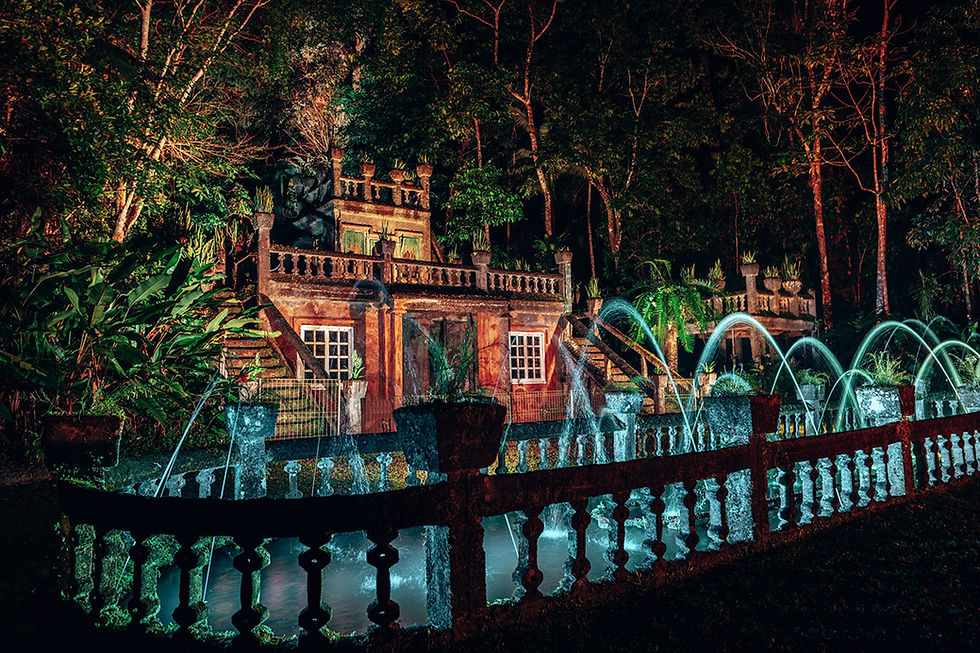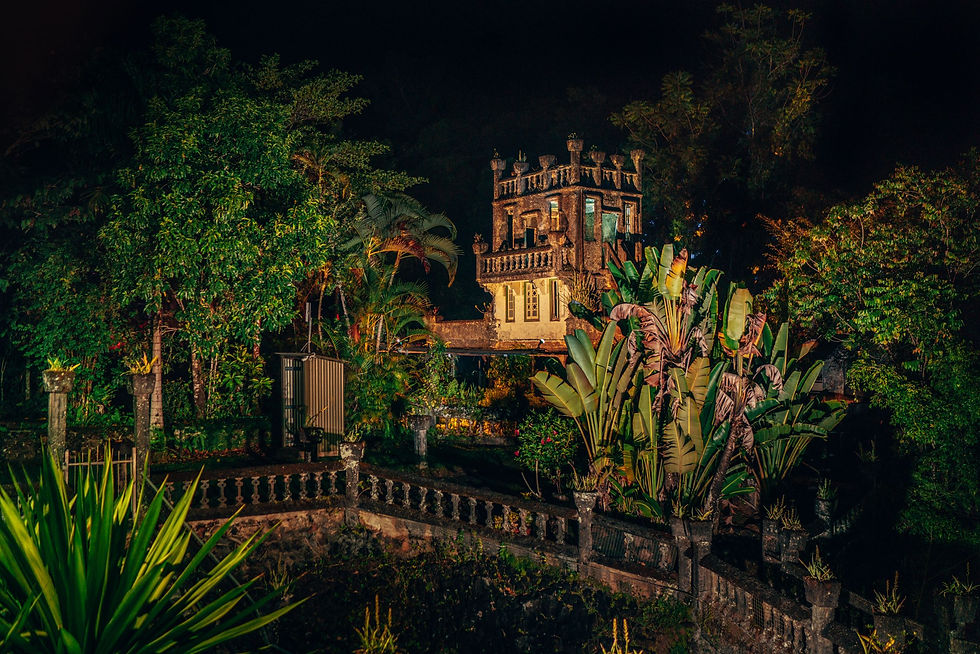Thank Goodness for His Grandma
- Digital Liz

- Mar 1, 2023
- 3 min read
It was his grandma who shared tales of the magnificent Spanish castles and the nobleza whose tax-free lives were filled with drama, decadence and excitement.
Oh, how he loved those night-time stories. The glamour and excitement inherent in them stayed with him through his adolescence, a bakery apprenticeship, a long voyage to Australia and his back-breaking work on cane farms in searing heat.
Who was 'he'? José Pedro Enrique Paronella.
Born in 1887 in a small village in North East Catalonia, José was the youngest of six siblings and the one cared for by his grandparents the most. It was grandma who encouraged him to follow his dreams, and at age 26 José arrived in Australia in search of work.

Heading north to Innisfail in Tropical North Queensland, his letters home explained how he hated the start of the cane cutting season - the pain from blistering hands with lacerations was almost intolerable, he wrote.
Thankfully, José quickly gained a position cooking for the cane cutting gang, blending traditional English ingredients with Spanish flair. The cutters loved it! But José didn't spend his money as they did, drinking and gambling. Instead, he saved every penny possible, holding tight to the dream that he would one day own a castle like those the Spanish nobles lived in.

The route to that dream was to buy land, clear and cultivate it. Over the following few years he was able to buy, improve and sell 12 cane farms, amassing a small fortune. Along with being a landowner came new respect, new friends and new opportunities. On 5 October 1921 José proudly became an Australian citizen, but that did not end his challenges. Being 34 years old and wealthy, he became a target of 'The Black Hand' * - a vicious 1920s and early 30s group of Italian cane workers who blackmailed farmers and extorted money in return for 'protection'. Protection from who? From The Black Hand. José refused to give in to their threats and instead returned to Spain. While there he married and Margarita came to share José's dreams of Spanish castles, with the pair eventually returning to Innisfail.
It was just 20 kilometres from that town that José purchased his perfect property - a beauty with a flowing creek, picturesque waterfall and safe swimming hole. José Paronella's dream was set to become a reality!

Opening in 1935 after years of building^, Paronella Park is one of Queensland’s earliest tourist attractions. And it remains one of the state's most popular, still featuring the waterfall that José found so mesmerising. And thanks to his labours it also has bridges, tunnels and a Spanish castle, along with fountains, a grand staircase and 7,000+ plants and trees.
Being conserved by current owners Judy and Mark Evans, Paronella Park is a visual smorgasbord of spectacular beauty and to ensure you don't miss any of it, guided tours sharing José's story run all day every day.

The Park comes alive at night too with a light and sound show that creates a feeling of magic and wonder that lingers long after your visit.
Paronella Park won both the GOLD award for Best Grey Nomad Attraction and Best Grey Nomad Historic Attravction nationally at this year's Great Nomad Awards.
* In February 1934 key figures of The Black Hand found themselves in the middle of a very public reckoning regarding the mutilation of a farmer (they cut off his ears) and that farmer's murderous revenge on a 'Lieutenant' of The Black Hand. As a result, by the start of 1935 - the year Paronella Park opened - numerous members were in jail while others decided it was time to leave a quieter life. Most people wish to leave history alone when it comes to The Black Hand's former activities out of respect to descendants of members who still live in far north Queensland.
^ Even though he had become wealthy, José 'got down and dirty' to build Paronella Park. The proof is there for all to see with his fingerprints visible on some buildings and structures. So it's only fitting that his and Margarita's headstones are also in the Park, having been moved from Innisfail Cemetery at the request of his family.
Much of this information came from 'The Catalan Footprint in Australia'.
#greynomadawards #greynomads #greynomadsaustralia #ontheroad #regionaltourism #regionalaustralia #seeaustraliafirst #awards #tourism #aussieadventures #exploreaustralia #vanlife #travellingaustralia #seeaustralia #wonderoutyonder #wandeusedrlust #adventureseeker #goexplore #adventure #paronellapark #tropicalnorthqueensland




Comments